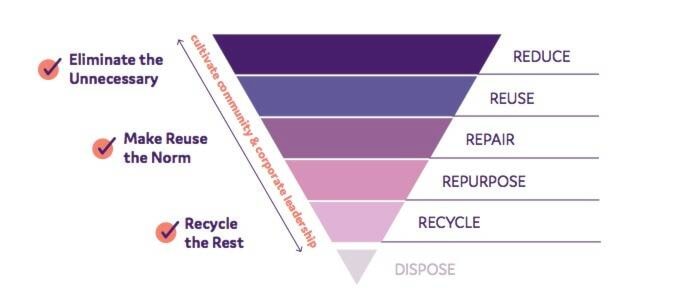When athletes stood on the podium during last summer’s Tokyo Olympics, the medals hanging from their necks were made from melted-down metals in six million old cell phones and other discarded electronics.
Others, nowadays, enjoy having their home moderated by insulation made from the excess scraps of denim that don’t get to become jeans.
Those are two examples of the circular economy that researchers say could recover $4.5 trillion worth of otherwise wasted resources by 2030. Keeping materials out of the landfill in the market is something the City of Victoria hopes to capitalize on as it adds a circular lens to its 20-year economic strategy.
Spurred by a motion from Coun. Jeremy Loveday, the city will now add a section to Victoria 3.0 on becoming a national leader in the circular economy.
“Making sure our economic priorities align with our goals regarding climate action and waste reduction, I think this helps us also to be in a better place to capitalize on the economic benefit of the circular economy which is predicted to continue to grow,” Loveday said before council approved the motion this month.
The action will include ensuring there are zoned areas for circular businesses and non-profits to operate within the city. Those will include light industry spaces, which Victoria-based Project Zero says reduces a key barrier for entrepreneurs trying to scale up their up-cycle or repair businesses.
“There isn’t anything right now that’s on that smaller scale or that’s financially accessible,” said Georgia Lavender, who leads Project Zero’s circular economy program.
The non-profit has been running a local entrepreneur incubator for five years, but the term “circular economy” was still new to people a couple of years ago, she said. But Lavender has been inspired lately by all sectors and levels of government seeing the approach as a way to support local innovation, job creation and supply chain resiliency.
“We’ve seen a really big shift toward regions wanting to implement a circular economy model and really seeing the opportunities it holds, not only from an environmental perspective but also an economic development perspective,” she said.
Some of Project Zero’s Victoria start-ups now commercializing include the cup-share service Nulla and BinBreeze, which uses waste wood to improve compost bin productivity and pest deterrence.
Lavender said the innovators are helping to cut emissions while creating jobs, and Vancouver Island as a whole has the opportunity to position itself as a leader in the circular sector. The focus could help the supply chain be more resilient, Lavender said, by using local manufacturing to reuse resources instead of shipping waste off the Island for processing.
The Victoria direction also commits to business space in the coming Arts and Innovation District, the creation of a circular economy hub, exploring partnerships for a zero waste demonstration site and launching an innovation grant.
“Things like that just create more opportunity for these ventures to keep their operations within Victoria and not have to move to other regions,” Lavender said.
READ: Project Zero aims to create circular Vancouver Island economy
READ: CRD aims to be zero waste national leader, reduce enough to curb landfill expansion
jake.romphf@blackpress.ca. Follow us on Instagram. Like us on Facebook and follow us on Twitter.
